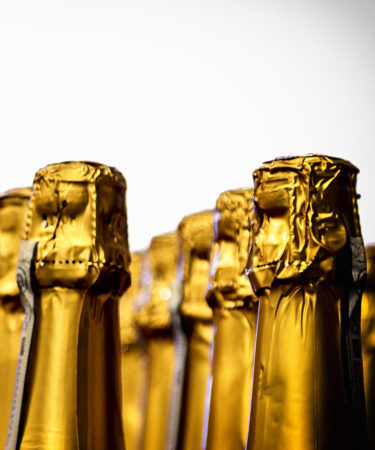Non-vintage wine is an odd concept. If wine is made through annual cycles, culminating in an autumn harvest, it always has a vintage, right? Not in Champagne, where at least 75 percent of the production is labeled “NV,” or non-vintage. So how old is the juice in your Champagne bottle?
Most of the time, there’s no real way to tell how old a bottle of non-vintage Champagne is. Non-vintage Champagne contains wine from two or more vintages, typically blended in order to achieve a standard house style from year to year. A winery is not required to release information about the age of the blended wines, but some houses and grower-producers are becoming more open about their non-vintage Champagnes.
Some large houses, such as Krug, now include QR codes on non-vintage Champagne bottles. By entering the six-digit “Krug ID” into the producer’s website, the drinker can see the disgorgement date and breakdown of all vintages in the non-vintage blend. Other producers have started including the disgorgement date — the date on which the lees are removed from the aging bottle — which gives an indication of when the bottle received its permanent cork. (Disgorgement generally takes place just before release.) Since non-vintage Champagnes are generally aged for anywhere from 15 months to two years before release, the math could give a general ballpark of age.
The only other shot at definitively knowing the age of a non-vintage Champagne comes from certain grower-producers. Increasingly, these grower-producers are exclusively producing single-vintage Champagnes. However, many of them don’t want to age their Champagnes for the longer period of time required to label the bottle with a vintage. Thus, these producers will release their wines as non-vintage Champagnes with a the vintage secretly indicated on the back label. Look for an alphanumeric code starting with the letter “R.” The digits that follow correspond to the wine’s vintage. For instance, “R08” indicates that the Champagne is from the excellent 2008 vintage.
In truth, it usually doesn’t really matter how old your non-vintage Champagne is. However, since non-vintage cuvées are generally meant to be consumed young, you may want to check that dusty bottle high up on the liquor store shelf, or the gifted Champagne that has been hiding in your closet. There’s no harm in drinking an older bottle of non-vintage Champagne — in fact, it could be an interesting experiment — but, to ensure that your Champagne is as fresh as possible, shop at a store known for its bubbly selection. The more Champagne that a shop sells, the more frequently it replaces its stock.
